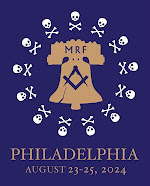“Out of the quarrel with others we make rhetoric; out of the quarrel with ourselves we make poetry.”
- William Butler Yeats
 |
Courtesy The Paris Review
Thoor Ballylee in County Galloway, once the home of William Butler Yeats. |
On this date in 1865 was the birth of William Butler Yeats, of great poetry and proud Irishman fame. He also was co-founder, in his youth at art school, of the Dublin Hermetic Society, at which time he also became a passionate student of Irish mythology and folk stories, which would become evident in his poetry later.
In esoteric circles, he perhaps is best remembered—that is, aside from his occult poetry—as a co-author of the rituals of the Esoteric Order of the Golden Dawn. Prior to that, he had been a known member of the Theosophical Society, where study and synthesis of religion, philosophy, and science is pursued; Yeats proceeded into the Society’s then new Esoteric Section, which was devoted to concepts and practices of magic. Unsatisfied by the fruitless experimentation of that work, Yeats’ search for spiritual work continued. One brief biography on-line says:
 |
| William Butler Yeats |
The Golden Dawn satisfied Yeats’ need to dig into his very core, and unleash what has been buried for so long. As Yeats soon discovered, the Golden Dawn incorporated traditional European cabalistic magic and astrology, as opposed to the wisdom of the East. In addition, the Golden Dawn encouraged exploration and wielding of power (over the material universe, unlike [Theosophical Society founder Helena] Blavatsky who constantly warned students against the practice of phenomena and oftentimes discouraged it altogether.) This highly pleased Yeats, and allowed him to open his magical aspirations to as high as he would go.
It was ninety years ago when Yeats was awarded the Nobel Prize for Literature. In his award ceremony speech, Per Hallström, Chairman of the Nobel Committee of the Swedish Academy, said of the poet:
The soul of nature was to him no empty phrase, for Celtic pantheism, the belief in the existence of living, personal powers behind the world of phenomena, which most of the people had retained, seized hold of Yeats’ imagination and fed his innate and strong religious needs. When he came nearest to the scientific spirit of his time, in zealous observations of the life of nature, he characteristically concentrated on the sequence of various bird notes at daybreak and the flight of moths as the stars of twilight were kindled. The boy got so far in his intimacy with the rhythm of the solar day that he could determine the time quite exactly by such natural signs. From this intimate communion with the sounds of morning and nighttime, his poetry later received many of its most captivating traits.
There isn’t much on the record to support any claim of Masonic membership for Yeats. He certainly kept company with Freemasons, MacGregor Mathers may be the best known. Researcher and author Marsha Keith Schuchard,
speaking in 2010 at the Livingston Library, says:
When the Yeatses resided in Oxford in 1921, they may even have attended a Masonic lodge. If so, it would be an Écossais or Rose Croix rite, which admitted women. In 1987, when my husband and I were living in Oxford, the eminent Yeats scholar Richard Ellmann confided to me that he had discovered a note in which George Yeats mentioned their Masonic attendance. Unfortunately, Ellmann became terminally ill and could not locate the note among his voluminous papers. He wanted me to examine her note, because I had been helping him with information on Oscar Wilde’s earlier initiation into a Rose Croix lodge in Oxford.
In his poem
Meditations in Time of Civil War, Yeats seemingly writes to tantalize the Masonic ear. Excerpted:
An ancient bridge, and a more ancient tower,
A farmhouse that is sheltered by its wall,
An acre of stony ground,
Where the symbolic rose can break in flower,
Old ragged elms, old thorns innumerable,
The sound of the rain or sound
Of every wind that blows;
The stilted water-hen
Crossing Stream again
Scared by the splashing of a dozen cows;
A winding stair, a chamber arched with stone,
A grey stone fireplace with an open hearth,
A candle and written page.
Il Penseroso’s Platonist toiled on
In some like chamber, shadowing forth
How the daemonic rage
Imagined everything.
Benighted travellers
From markets and from fairs
Have seen his midnight candle glimmering.
And later:
I climb to the tower-top and lean upon broken stone,
A mist that is like blown snow is sweeping over all,
Valley, river, and elms, under the light of a moon
That seems unlike itself, that seems unchangeable,
A glittering sword out of the east. A puff of wind
And those white glimmering fragments of the mist sweep by.
Frenzies bewilder, reveries perturb the mind;
Monstrous familiar images swim to the mind’s eye.
‘Vengeance upon the murderers,’ the cry goes up,
‘Vengeance for Jacques Molay.’ In cloud-pale rags, or in lace,
The rage-driven, rage-tormented, and rage-hungry troop,
Trooper belabouring trooper, biting at arm or at face,
Plunges towards nothing, arms and fingers spreading wide
For the embrace of nothing; and I, my wits astray
Because of all that senseless tumult, all but cried
For vengeance on the murderers of Jacques Molay.
“Soon after writing these lines,” Schuchard says, “Yeats learned in November 1923 that he had won the Nobel Prize in Literature.”










































































